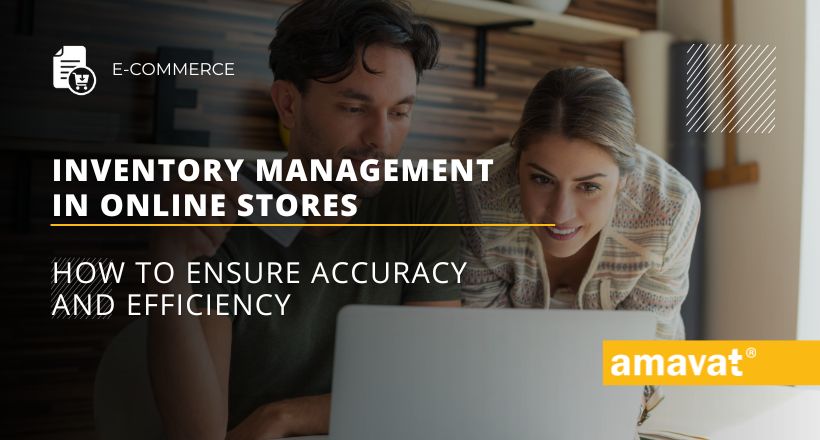Inventory management in online stores: How to ensure accuracy and efficiency
Every online store, like traditional brick-and-mortar stores, must conduct inventory, also known as stocktaking or physical inventory. This is not only a legal requirement but also a crucial part of managing a company’s resources. Inventory involves accurately counting and recording the state of goods in the warehouse as of December 31. This process allows for verification of the actual state of the company’s assets, which directly affects the amount of income tax. Below is a detailed guide to help you carry out this process smoothly and error-free.
What is inventory and why is it important?
Inventory is the process of thoroughly checking and recording the state of a company’s stock at the end of the fiscal year. The purpose of this process is to compare the actual number of goods with the records in the accounting system, which helps identify any surpluses or shortages. Inventory is crucial as it affects the final valuation of the company’s assets and the amount of income tax due.
Preparing for inventory – Who should conduct the inventory?
Preparing for inventory in an online store requires proper planning. According to regulations, the inventory list must be signed by at least two people: the business owner and the employee conducting the stocktake. In the case of a sole proprietorship, the second person can be a spouse or another family member. It is also worth considering hiring additional staff or outsourcing to an external company if you have a large amount of goods.
What assets should be included in the inventory?
During inventory, the following should be included:
- Trade goods – Finished products intended for sale that are not subject to further processing.
- Raw materials and supplies – Materials used in the production of own products and auxiliary materials, such as packaging.
- Finished products – Products made in-house and services rendered, such as paid consulting.
- Work in progress and semi-finished products – Products that are in the process of being manufactured or processed.
- Defects – Damaged or substandard products.
- Waste – Materials that have lost their utility value.
Also, include goods owned by the company that are outside the warehouse on the inventory date, and foreign products in the company’s possession that are not being appraised.
How to count goods?
Goods can be counted manually or with barcode scanners, which significantly speeds up the process. Prepare a detailed list of all products, including their names, quantities, and unit prices. It is important for this process to be as accurate as possible, as any errors can impact later valuation and tax calculations.
How to value inventory?
Within 14 days of completing the stocktake, the valuation must be conducted. Valuation is based on:
- Purchase price – The amount paid for the goods, minus VAT and any discounts.
- Acquisition cost – Including all costs associated with the purchase, such as transportation.
- Market price – Applied if it is lower than the purchase price due to damages.
Finished products, semi-finished products, and work in progress are valued based on their production costs. Waste is valued based on its usefulness for further use.
The importance of valuation for income tax
The final inventory value directly affects the amount of income tax. If this value is higher than the initial inventory value, the income tax will increase, while a lower value will decrease the tax. The inventory value must be included in the Revenue and Expense Journal (KPiR), where it represents the last item for the previous year and the first item for the current year.
Documenting inventory results
The results of the inventory must be recorded in the appropriate accounting documents. The inventory list should include:
- The date of the inventory.
- The name of the owner.
- A detailed list of goods, materials, defects, and waste.
- The quantity and unit price of each item.
- The total value of the inventory.
- Signatures of the people conducting the inventory.
Storing documents
Documents related to inventory must be kept for 5 years along with other accounting documents. There is no requirement to submit the inventory list to the tax office, but it must be available in case of an audit.
Summary – Practical tips
Inventory in an online store is a key process that requires both precision and diligence. It is not only a mandatory action in compliance with regulations but also an invaluable tool for obtaining an accurate picture of stock levels, which is essential for effective business management. To conduct inventory, consider various options: you can do it yourself, use the services of an external company, or assign the task to employees. To streamline the process, investing in barcode scanners can significantly speed up the counting of goods. It is also important to prepare an inventory report that should include the date of the inventory, company name, item numbers, product names, quantities, unit prices, and total value. Equally important is adhering to deadlines – the inventory should be completed by the end of the year, and the valuation of goods should be done within 14 days of its completion. With careful preparation and following the above tips, inventory can proceed smoothly and problem-free, allowing you to focus on other aspects of running an e-commerce business.





